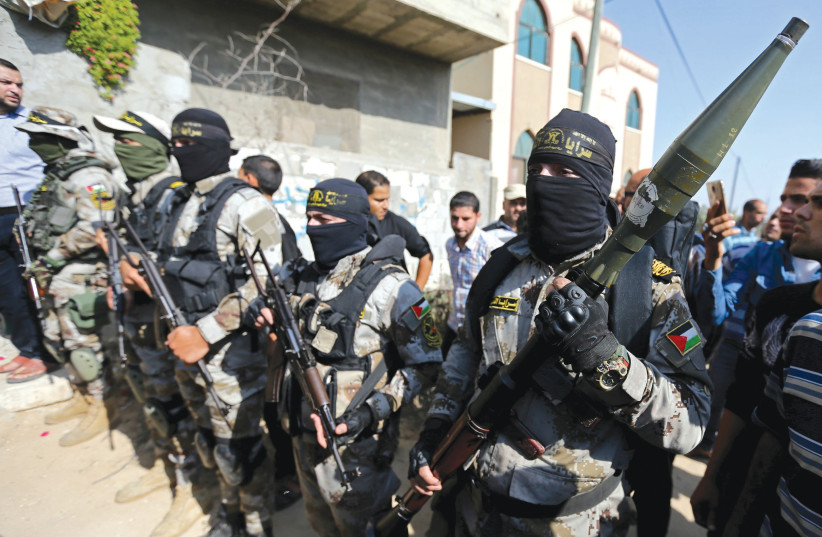It is now a month since the confrontation between Israel and the PIJ (Palestinian Islamic Jihad) in the Gaza Strip, known in Israel as Operation Breaking Dawn. There is still tension regarding it. A new confrontation might occur in the Gaza Strip. There could also be a clash with Hezbollah, so the IDF must be ready, following the lessons from this recent round.
In the last two decades the IDF had numerous clashes with NSAs (Non-State Actors) such as Hezbollah, Hamas and the PIJ. The biggest confrontations took place from July to August 2006, December 2008 to January 2009, and July to August 2014. Another round, a smaller one, occurred in May 2021. Most of those fights lasted several weeks, ending in a kind of draw. It was certainly frustrating for the IDF, considering its quick and impressive victories in the past, such as in 1967.
Furthermore, in 1967, the IDF defeated enemies that had more troops, weapons systems, etc. In fighting NSAs, the IDF enjoys overwhelming advantages, like in firepower, weapon systems, etc. Yet, the outcome was not satisfactory from Israel’s point of view. In addition, those NSAs are supported by Iran, Israel’s nemesis. There has been a long conflict between those two states. Israel is frustrated that it got entangled in one round after another with pro–Iranian NSAs, with all it has cost Israel, while Iran stays intact.
Israel fights Iran-backed groups, but Iran stays unharmed
In recent years, the IDF has initiated reforms aimed at defeating pro-Iranian NSAs, quickly and decisively, which could also diminish Iran’s position in the region. The IDF, following its multi-year plan, Momentum, invested in upgrading its performance, such as by increasing the coordination between air, ground and sea units, and assimilating advanced technology. Those improvements were tested in exercises, but obviously, the ultimate test is in combat.

Prior to the confrontation of August 2022, there was a period of several days when there was high tension between Israel and the PIJ, so both sides had to be on alert. Nevertheless, the IDF managed to surprise the PIJ by launching a successful first strike, which killed one of the PIJ’s top commanders and destroyed some of its facilities. However, it was quite a limited attack and the IDF did not follow it with a massive air, ground, air and naval offensive, which would be required in a fight against Hezbollah. The lack of such an attack since the war of 2014 raises doubts if Israel is willing to conduct such an attack.
Focusing on air power to avoid Israeli casualties, limit Arab civilian casualties
IN AUGUST 2022, the IDF, despite all its preparations in recent years, did not conduct a large-scale ground attack and actually not even a small one. Israel wanted to avoid casualties among its troops, so Israel relied on air power. Israel had no casualties and it also took steps to prevent Arab civilian casualties in the Gaza Strip.
Around fifty Palestinians were killed during the confrontation, half of them were combatants, and the rest were civilians, including those who were killed by mistake by the PIJ, since some of the rockets it fired landed inside the Gaza Strip. In a fight against Hamas or Hezbollah, the collateral damage might be much higher, with all its implications for Israel.
During the confrontation of August 2022, 1,175 rockets and mortars were fired by the PIJ. The Iron Dome air defense system intercepted around 380 rockets, while others missed their targets. At the same time, the IDF bombed dozens of targets in the Gaza Strip, in order to reduce the fire toward Israel. In a fight against Hezbollah, Israel’s air defense would not be able to intercept many of the incoming rockets and missiles because there would be too many of them, a serious problem that emphasizes the need to launch a large-scale offensive, aimed at suppressing fire toward Israel.
The PIJ and Israel restrained themselves to avoid escalation into an all-out war, not only between each other but with Hamas, as well. Hamas runs the Gaza Strip. The PIJ hoped Hamas would join the fight in the name of Palestinian solidarity but Hamas was careful and stayed out of this round in order not to absorb a painful blow from Israel. Hamas sees the PIJ as an ally but also as a rival. Hamas was pleased to see both of its foes, Israel and the PIJ, hit each other. In the next round, those two groups might fight together against Israel. However, Hezbollah, as it did in previous confrontations, might not join them.
Some claimed Israel won the confrontation of August 2022. It ended in three days, much less than in former rounds. It was important for Israel, a kind of small victory, a limited one that somewhat boosted Israel’s deterrence regarding pro-Iranian NSAs. The confrontation might have ended the series of draws Israel had in confronting pro-Iranian groups, yet the outcome does not necessarily mean the IDF developed a new and successful way to defeat NSAs.
The IDF fought more or less the same as it did in previous confrontations. Israel also had to restrain its actions, among others, in order to reduce collateral damage. Furthermore, Hamas and certainly Hezbollah are more powerful than the PIJ, which is quite weak and isolated in the Gaza Strip. The IDF’s biggest test might be in the future.
The writer has been dealing with and studying Israel’s national security for more than 25 years. He served in the Israeli military and later worked for the Defense Ministry as a researcher. He has a PhD and has published eight books, including his latest, Israeli Strategies in the Middle East: The Case of Iran (Palgrave Macmillan, 2022).
